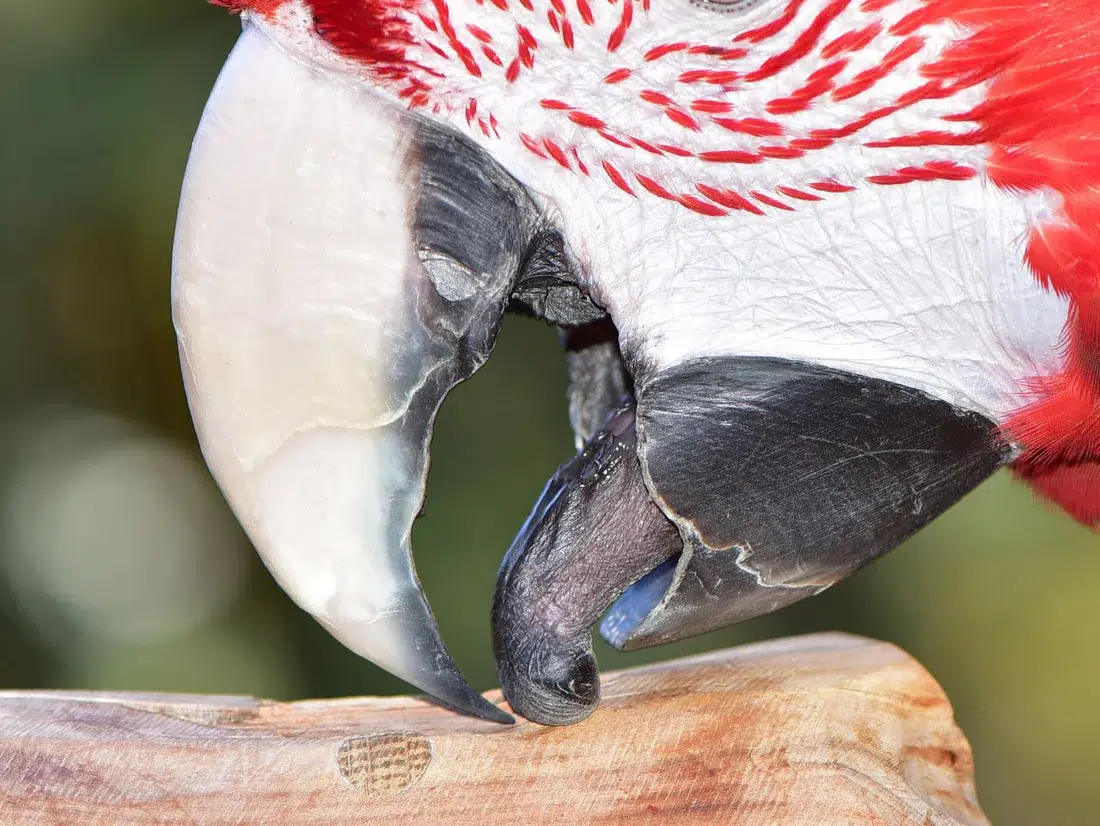
Parrot Beak Anatomy – All You Need To Know (With Pictures!)
Parrots are considered the most unique birds in the avian kingdom for so many reasons. Some of these reasons include having their characteristic hooked beaks with a hole under it and in certain species, a specialized brush or bristle-tipped tongue.
Both the tongue and the beak work in a coordinated manner. The structure and shape of a parrot’s beak is very significant since it has to work together with the tongue to pick food, manipulate, and swallow it accordingly. Therefore, the beak is very important when parrots are eating and touching things around them.
This article introduces parrot beak anatomy to give you some insights about the structure and functions of parrots’ beaks, as well as how you can care for them.
Jump To Section
Parrot Beak Anatomy
Parrots have an astounding beak that is uniquely adapted to suit their needs. Parrots are often also referred to as hookbills, because the shape of their beaks is like a hook. Just like human beings, parrots have two jaws: the maxilla, which is the upper jaw, and mandible, the lower jaw. Their nostrils are located on a fleshy surface called cere, which is right between the head and the beak. Nostrils (the “holes”) are also known as the nares.
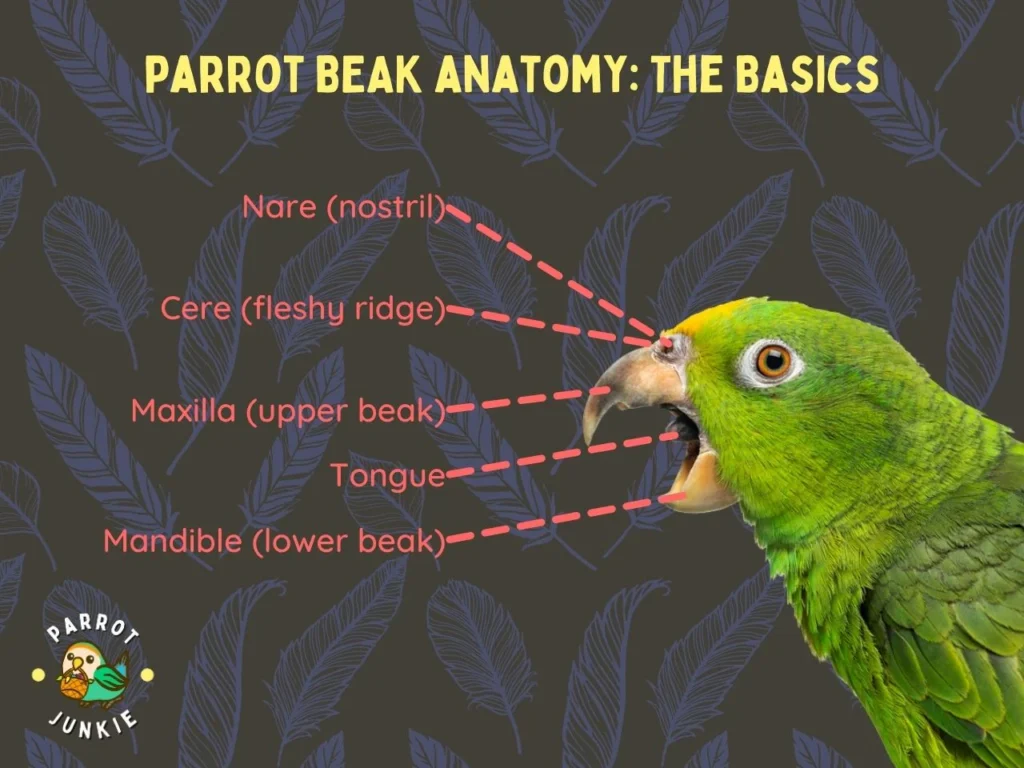
The video below shows a comprehensive description of a parrot’s skull, a large part of which consists of its beak and related systems. The video is produced by Witmer Lab of Ohio University.
Maxilla
The maxilla is the upper jaw of a parrot. It is connected to the parrot’s skull via the craniofacial hinge. Parrots are unique birds as they are able to move their upper beak independently from its lower beak, cranking it upwards (most apparent when the bird is yawning), pivoted via the craniofacial hinge. This ability enables them to easily manipulate food in their mouths and have enough strength to crack open nuts and seeds. Other birds, on the other hand, usually have their beaks fused to their skulls, which limits the flexibility.
The maxilla is covered by a keratinous sheath called the rhinotheca. Within the maxilla, some parrots have tiny ridges like a nail file, which help the bird to crush and “chew” their food easily. The maxilla tapers off into a sharp point. Depending on the species, some birds have a thin, tapered beak, while others have a wider beak. It is said by some owners that parrots with thinner beaks pierce skin more easily when they bite. I haven’t personally verified this, though!
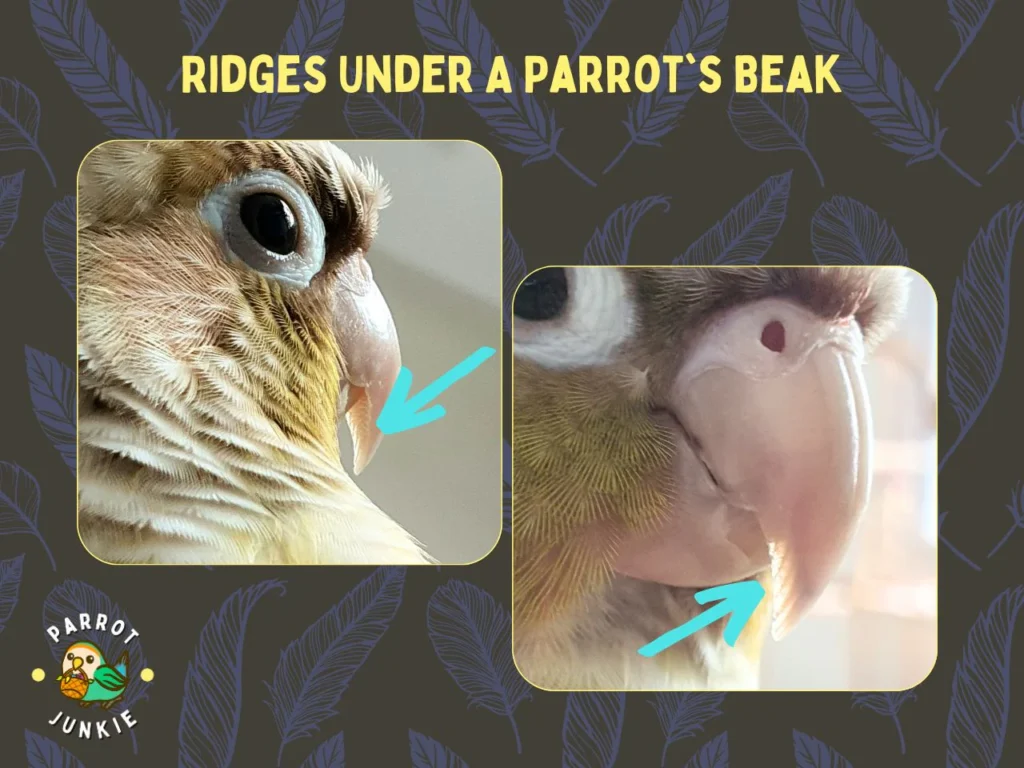
Mandible
The mandible refers to the lower jaw (beak) of a parrot. It is an essential tool for the parrot and works together with the maxilla. Using the beak, the parrot supports itself in climbing around, picking up food and toys, drinking, preening, and several other activities.
The mandible is shaped like a cup and has two curved tips at the end of it. The curved tips enable the bird to grip onto food and act as a focal point to crush food. In parrots, the mandible should be aligned centrally to the maxilla, and always located underneath it without protruding (in an underbite). In some beak conditions, the upper and lower parts of the beak are misaligned, and may be corrected to some degree while the bird is still young, but may be difficult to correct when the bird is older.
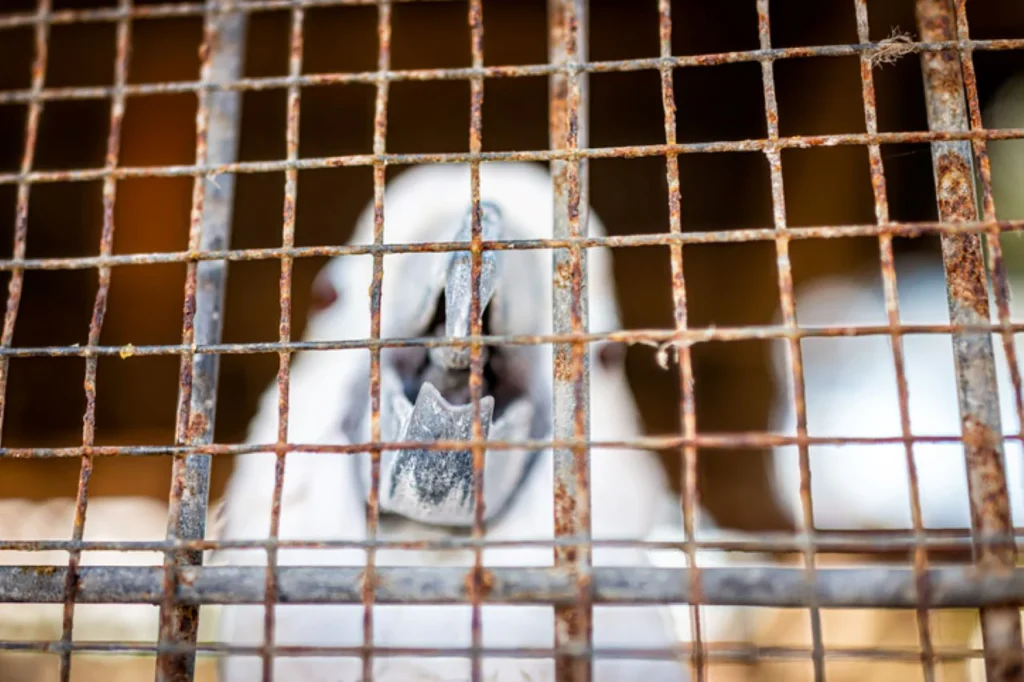
Some birds have mandibles that are of a different color than the maxilla. This is normal in certain species. For example, the Indian ringneck parakeet, in its original (wild) green mutation, has a orange-red upper beak and an almost full black mandible. Not all Indian ringnecks have this type of beak color variation – lutino birds’ beaks are fully red, for both the maxilla and the mandible.
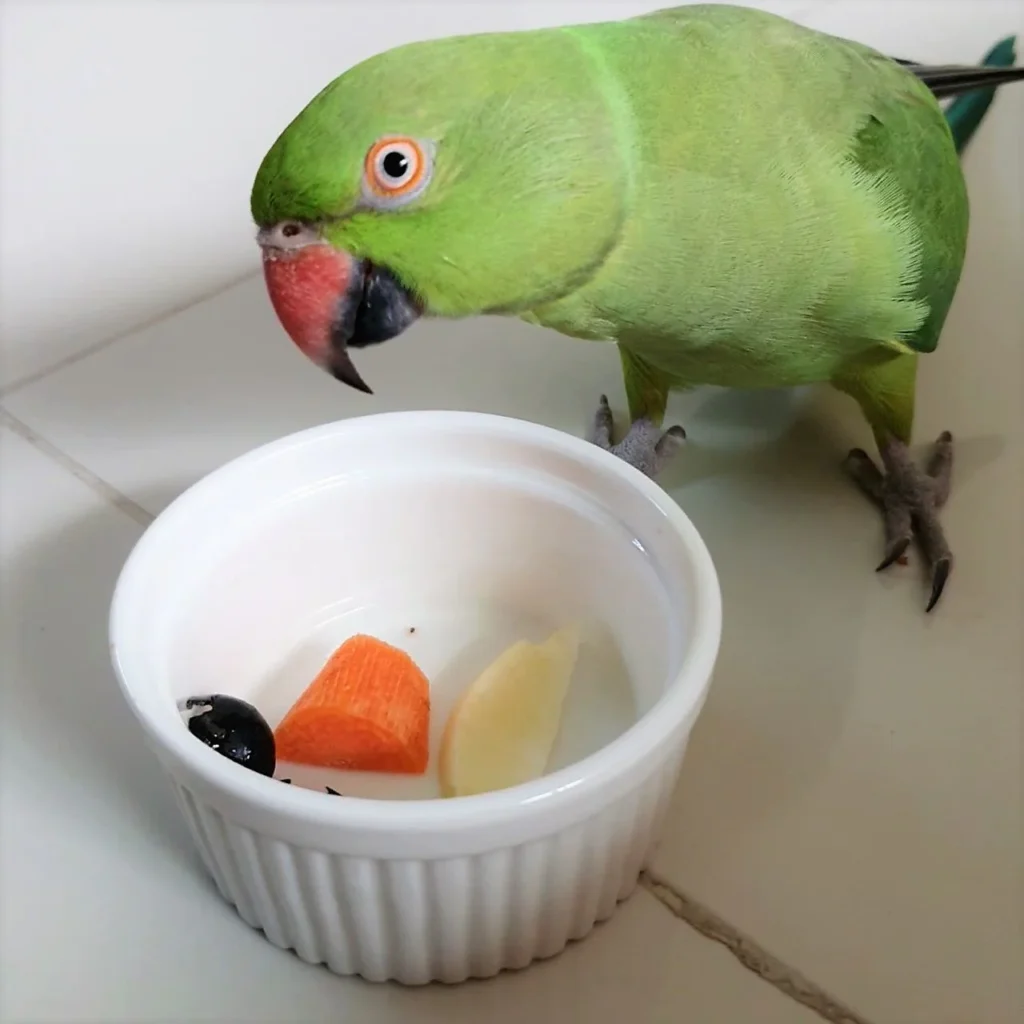

Rhamphotheca
The rhamphotheca refers to the outer covering, or the keratinous sheath, of a parrot’s beak. The keratin covering the maxilla (upper beak) is called a rhinotheca, while that covering the mandible (lower beak) is called a gnatotheca. It is made of similar material as our fingernails.
The rhamphotheca of a bird grows continuously, similar to what humans’ fingernails do, in order to maintain the beak surface as well as its length. A parrot regularly grinds, files, and rubs its beak during its daily activities, and this wears the beak down. The keratinous growth enables parrots to replace the worn down beak over time.
Parrots have an excellent sensory ability due to a number of nerve endings just under the keratin cover. They make the upper beak the most sensitive area. Besides, the beak also contains enough blood supply.
Interramal Space
Many parrot owners have wondered why their birds’ beaks do not join the neck or throat, but instead leave a “hole” between the lower mandible and the neck. This “hole” here is not really a hole, but rather a small gap to allow the lower beak to move around more easily. This area is connected to the parrot’s mouth system. It enables the parrot to open and close its beak without pressing the hard edge of the beak against its neck.
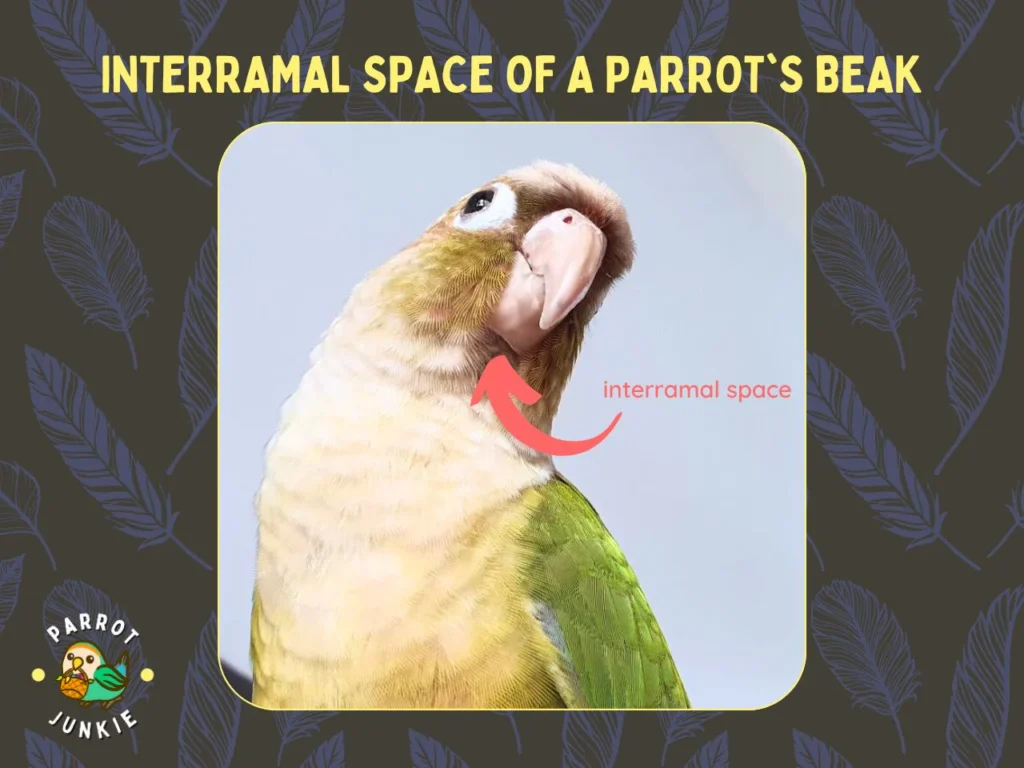
Cere
The cere and nares of a parrot are located on the outer fleshy part of the beak. In some species, the cere is much more pronounced than others, and can indicate certain characteristics depending on its color.
Notably, budgies have a protruding fleshy area forming the cere, and the color of the cere can indicate a few things:
- Whether it is young or old – most budgies have a pink cere when they are young, so there is not much of a differentiation before they mature
- Whether it is likely to be a male or female – after maturity, female budgies either show brownish, pink, or light blue ceres, while male budgies are usually bright blue (except for recessive pied budgies)
- Whether it is in breeding condition – male budgies’ ceres turn dark blue when they are ready to mate
- Certain mutations – recessive pied males have pink cere even at maturity and even in breeding condition
Despite some degree of dimorphism, it can still be difficult to differentiate whether a budgie is male or female, solely based on the cere color.
It is important to take note of the color of the cere, as discolored ceres can indicate serious illness. If you notice that your bird has an unusual cere color (that is not normally observed), you may need to seek medical advice for your bird quickly.
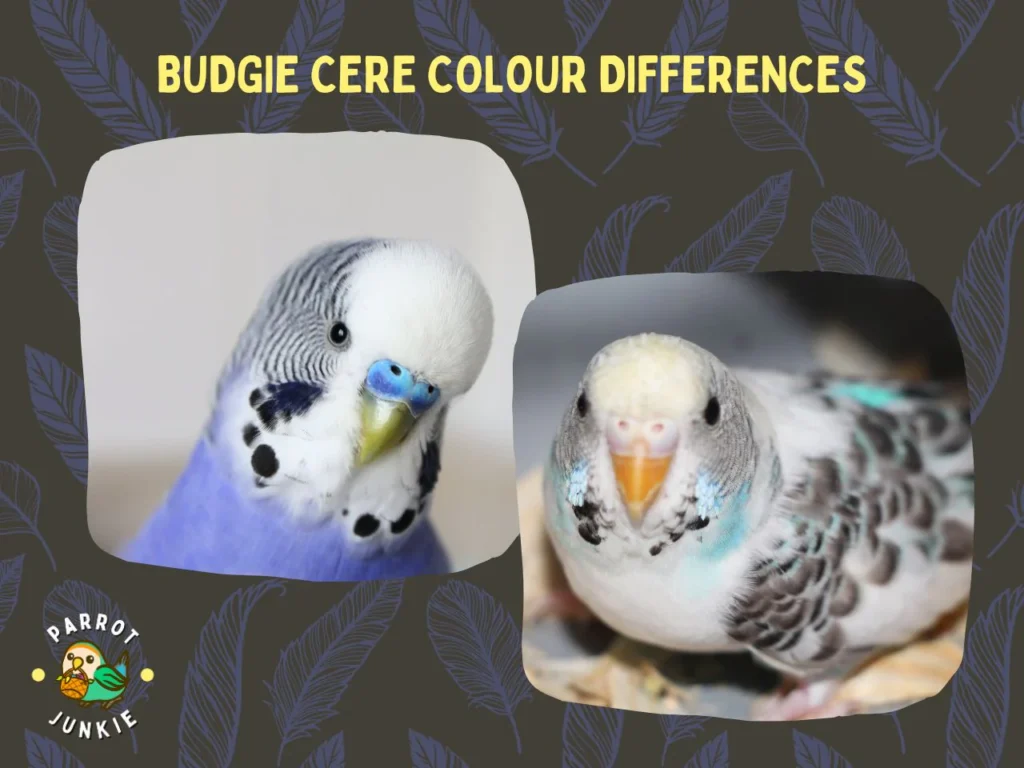
Nares
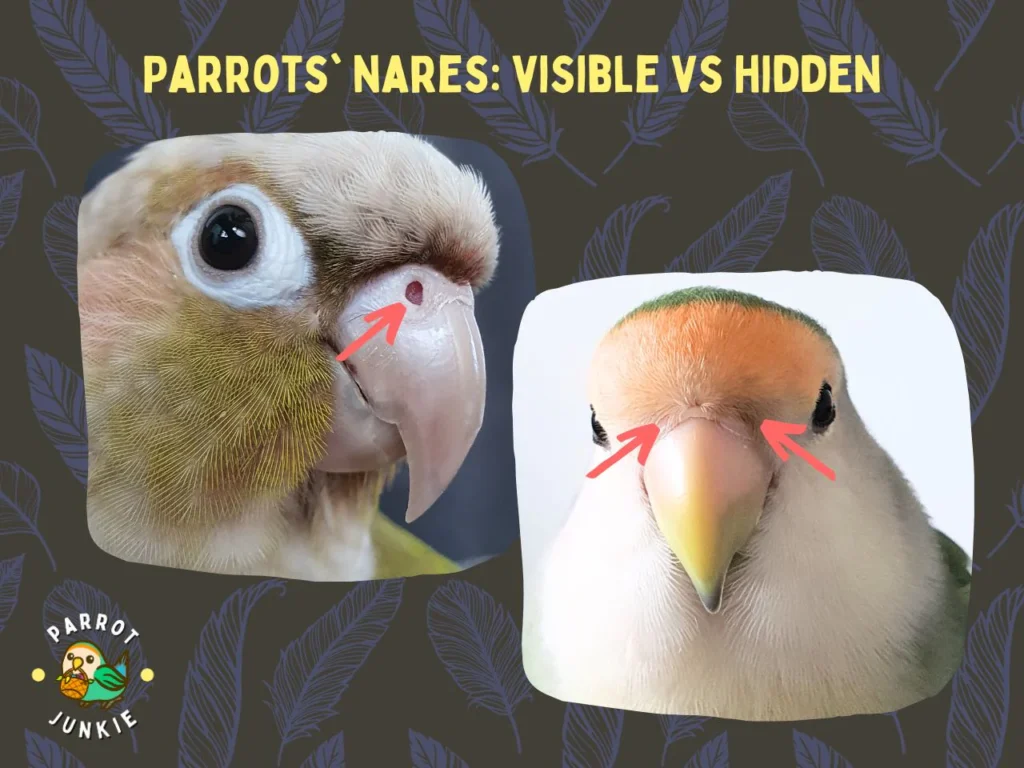
The nares of parrots are distinctly shown as two openings on the cere, just above the upper beak. In some species, the nares are more visible, while in others, they may be covered with a thin “curtain” of feathers. In the above image, you can see that my lovebird, Loki, has nares beneath a thin layer of feathers, so it looks almost like she has no nostrils. On the other hand, my green-cheeked conure, Bibi, has very prominent nares, and are not covered at all by any feathers.
Parrots’ nares should be clear of foreign objects and fluids, especially for a healthy bird. You should be able to see a hollow “hole” where a nare is, and often you can also observe a bit of flesh and structures within the hole. Do not mistake those for foreign objects and try to remove them! It will cause injury to your bird, if you are unsure, seek advice from an experienced bird handler or a vet.
Nares should be kept clean, and this is often done by the bird itself. Occasionally, you may find your bird “picking its own nose” with a toenail and sneezing after that, particularly after scratching its face. Parrots also clean their nares during baths, where the water sloshing around would sweep any debris away from the nares.
If you notice your parrot’s nares getting bigger, or being obstructed by a stone-like growth, it could be developing a rhinolith. Rhinoliths can be caused by various factors and will need to be removed by surgery.
Egg Tooth
Baby birds hatch with the help of an egg tooth, which is a hard protrusion on its beak, used to break the egg membrane and eggshell. When the chick is almost ready to hatch, it uses its egg tooth to break the egg membrane in order to access the air sac between the membrane and the shell. While breathing this air, the chick then breaks the eggshell using its egg tooth again, a process called “pipping”. It continues to break open the shell until a hole is formed through which it can emergy.
The egg tooth either falls off soon after hatching (in the case of most birds), or gets incorporated back into the beak (in the case of finches and sparrows). This is why in most young parrots, we do not get a chance to see the egg tooth except for when we have a chance to observe a newly-hatched chick.

What Are The Functions Of A Parrot’s Beak?
- For eating: Their beaks are short-curved to facilitate cracking of seeds and nuts.
- For drinking: It enables them to drink by scooping water into the mandible
- For moving around: They also use their beaks to climb surfaces and trees.
- For self-care: It facilitates feather preening and other grooming activities
- For breeding: It enables the bird to shred and collect nesting materials to build nests
- For feeding: It serves as a tool to feed their young
- For self-defense: It is used as a weapon against threats
How To Identify A Healthy Beak
A number of health problems can really affect your parrot’s beak performance. A parrot will stop using its beak if it’s making him uncomfortable in some way. This is a serious problem as they need healthy beaks for various essential functions like eating, preening, defending, communicating, etc.
You should look for the following signs to identify a healthy beak. Your bird’s beak is generally healthy if:
- Both the lower and upper beak properly align.
- The lower beak sits correctly underneath the upper beak and does not protrude the upper beak.
- Both the lower and upper beaks have an appropriate length: neither too long nor too short.
- There are no strange bumps, grooves, holes, or chipped-off parts.
- It is generally smooth-looking. Some flaking and light scratches are expected as normal wear and tear, but excessive flaking or deep scratches can signal an issue.
- There is no staining (apart from food). The beak should maintain its original color.
- It is not dented, bleeding or bruised, either internally (underneath the surface of the beak) or externally.
Parrot Beak Health Conditions
To learn more about various health conditions of parrots’ beaks, refer to our article about beak issues!
Final Notes
Knowing parrot beak anatomy is very important, as it helps your understand how it works, and how essential it is to your parrot. Regularly check for signs of injury or deformity, and ensure that the beak is kept at a proper length, so as not to impede its normal function.
Stay tuned for more articles on parrot anatomy to get to know your avian friends better!
Parrot Junkie www.parrotjunkie.com
Copyright © 2021-2024. All rights reserved.
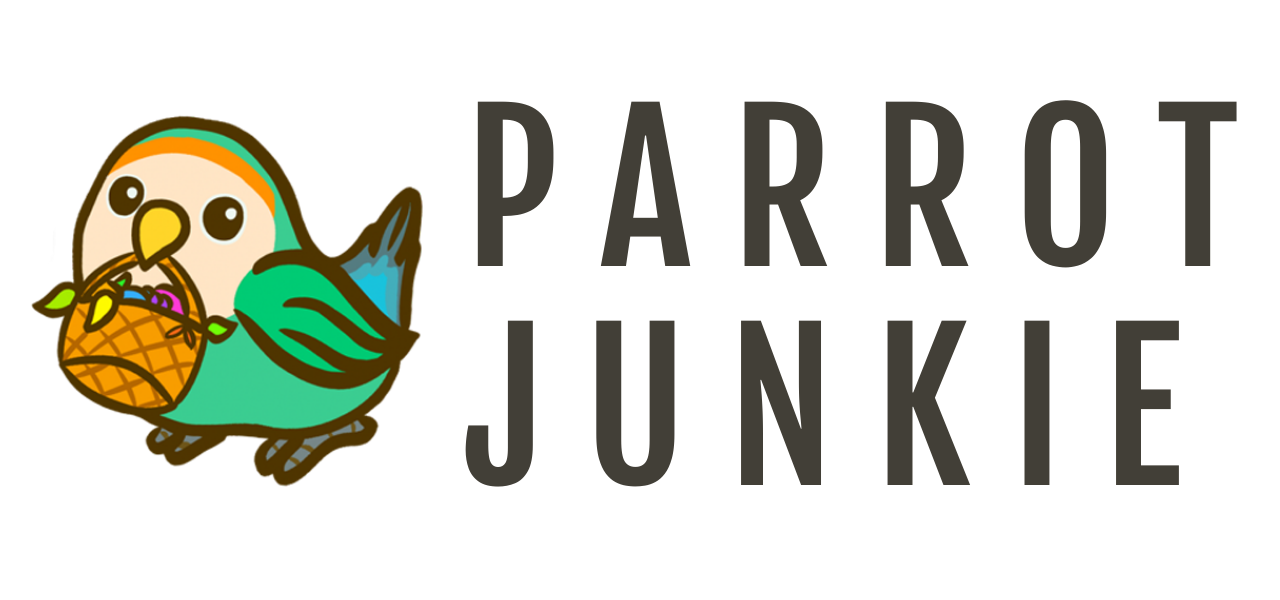
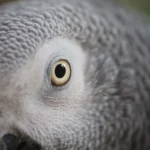
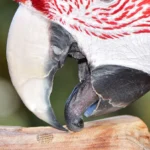
Pingback:
African Grey Parrots: An Overview of Characteristics and Care - Parrot Junkie